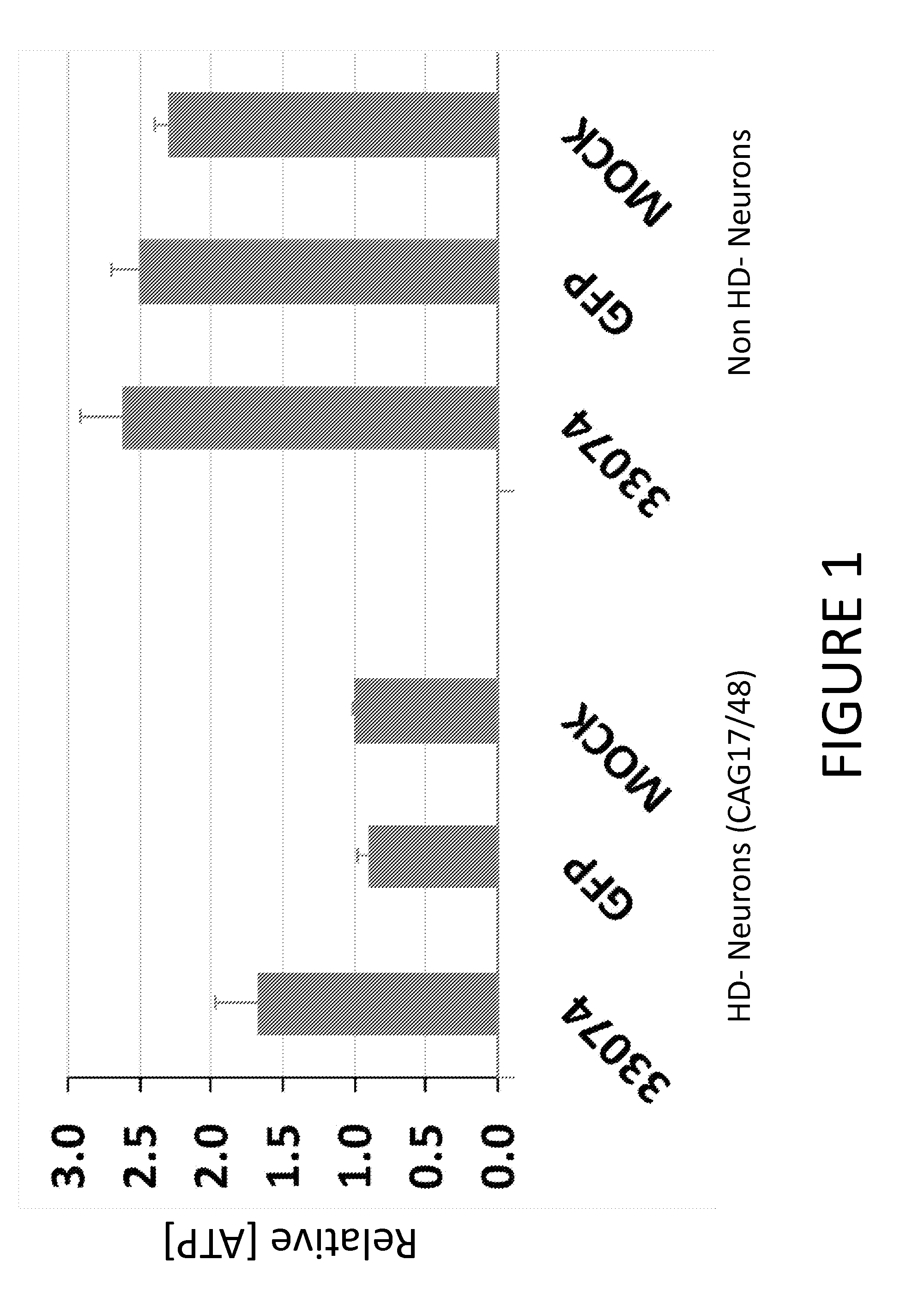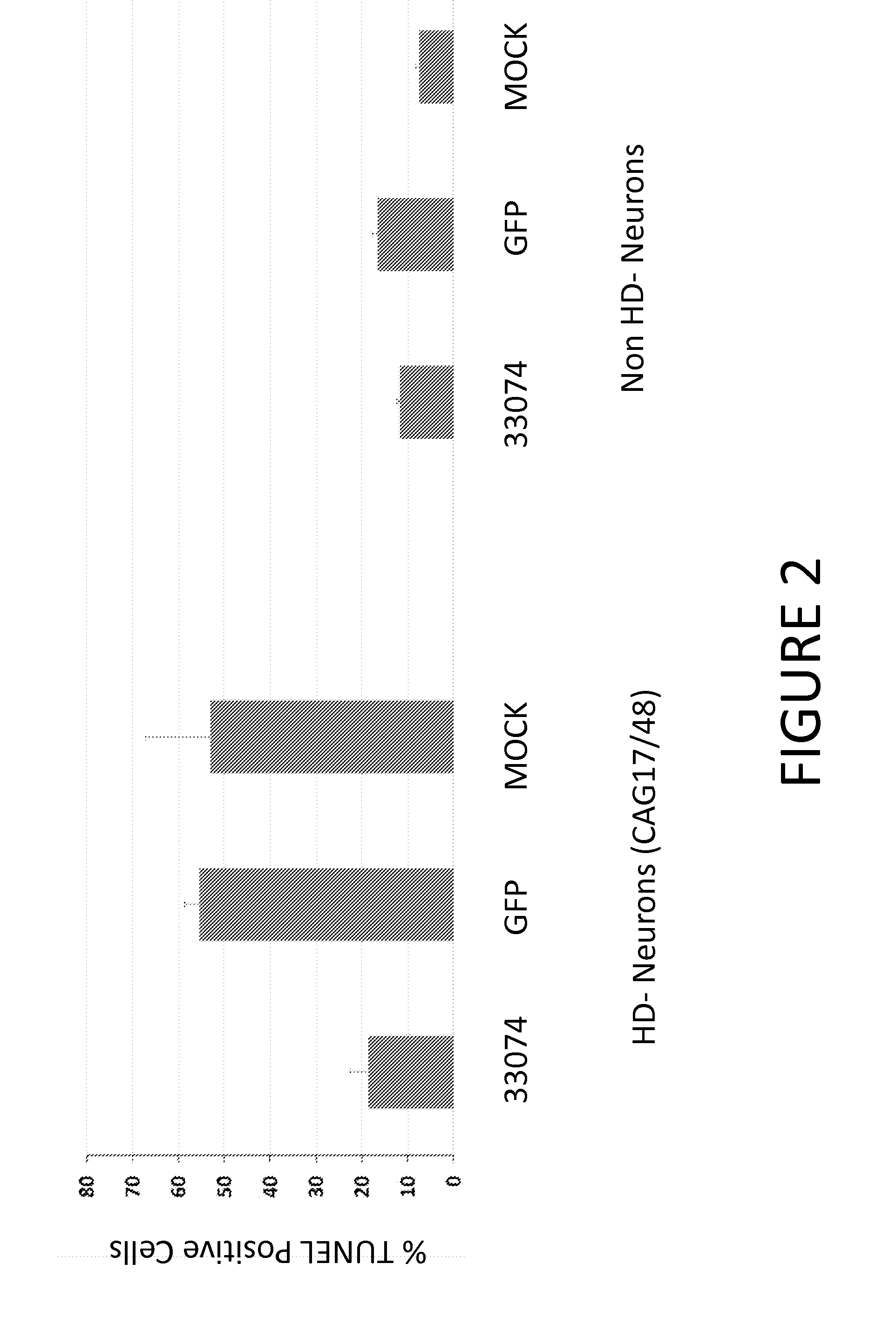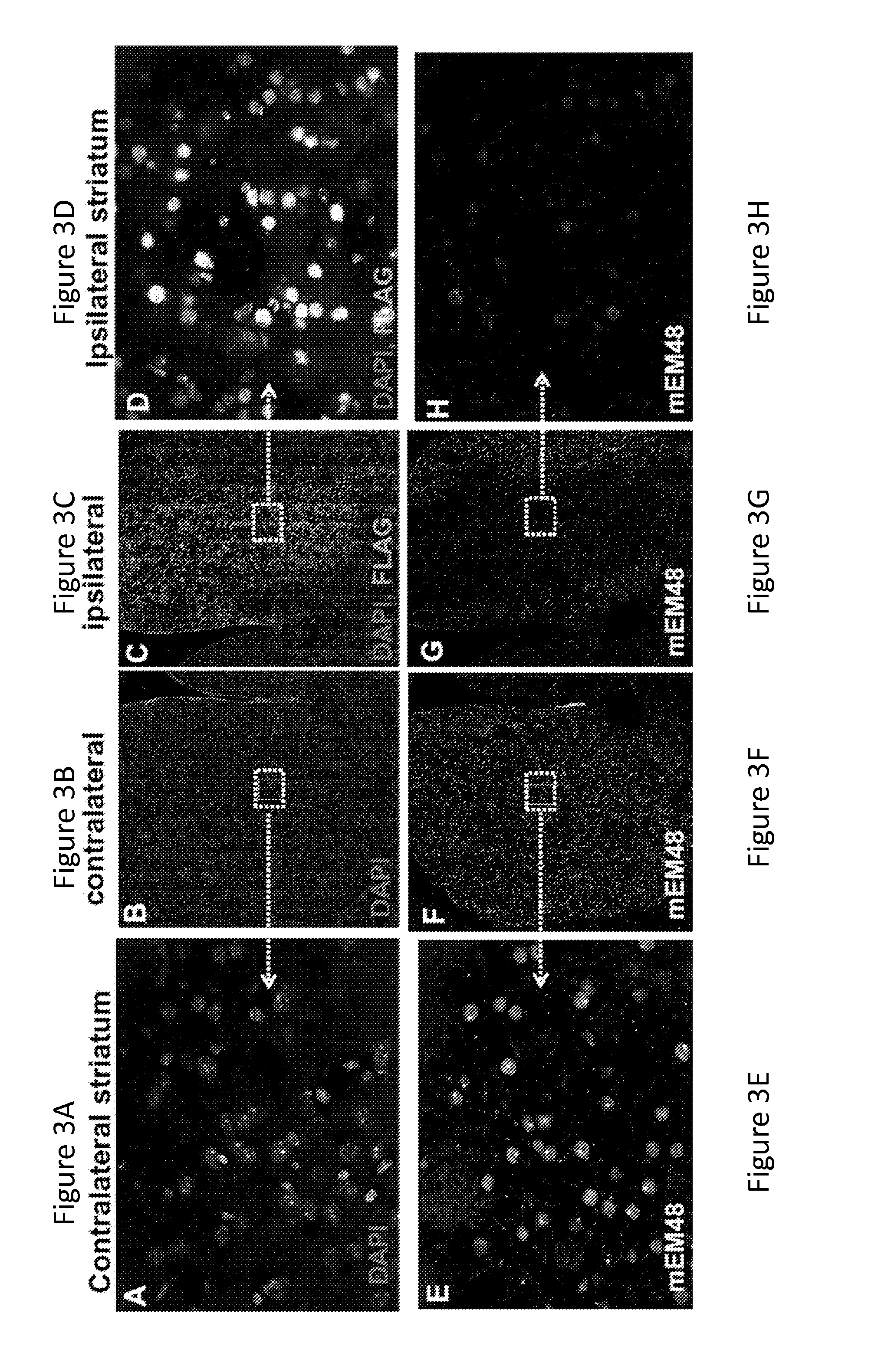Methods and compositions for treating huntington's disease
a technology of compositions and methods, applied in drug compositions, peptides, metabolic disorders, etc., can solve the problems of loss of function of the gene in which the expanded repeat is expressed, gain of toxic function, mis-folding and protein aggregation, etc., to reduce and/or eliminate the htt aggregate, improve motor deficits, and increase cellular activity
- Summary
- Abstract
- Description
- Claims
- Application Information
AI Technical Summary
Benefits of technology
Problems solved by technology
Method used
Image
Examples
example 1
ZFP-TFs Rescue Phenotypes of Cultured HD Neurons
[0152]Various studies have shown phenotypic changes associated with expanded CAG repeats in HD patient derived cells, such as reduced intracellular ATP levels and increased vulnerability to growth factor withdrawal. See, e.g., Jung-Il et al. (2012) Biochemical Journal 446(3):359-371; HD IPSC Consortium (2012) Cell Stem Cell 11(2):264-278; An et al. (2012) Cell Stem Cell 11(2):253-263.
[0153]Accordingly, we evaluated whether expression of an allele-specific ZFP repressor of Htt rescues such phenotypes in patient derived neurons. Briefly, lentiviral vectors for Venus (GFP) and ZFP-TF 33074-KOX-2A-Venus were generated as described herein and in U.S. Patent Publication No. 20130253040. The cleavable 2A peptide allows Venus (GFP) and ZFP to be expressed from the same vector, and ZFP-expressing cells can be identified by GFP expression. The lentiviral expression constructs were the third generation self-inactivating HIV-based LVs. The 33074 e...
example 2
ZFP-TFs Prevent and Reverse Mutant Htt Aggregation in Q175 Mice
[0161]The in vivo efficacy of allele-specific repressor of mutant Htt ZFP-TFs (ZFP-30640 and 30645), was tested in the Q175 knock-in mouse model (Menalled et al. (2012) PLoS One 7(12):e49838), in which exon 1 of one of mouse Htt allele was replaced by human Htt exon 1 sequence that contains an expanded CAG repeat (˜179 CAGB). Pathological aggregation of mutant Htt can begin to be detected in the striatum of Q175 mice by 2 months of age, and continues to increase with age; aggregation becomes well-established by 6 months of age.
[0162]To test whether ZFPs can prevent accumulation of mutant Htt in the striatum, unilateral intrastriatal injection of AAV-ZFP, or AAV-GFP as a negative control, (2×1010 vector genome / striatum was performed on 2-month-old Q175 mice; ZFP and GFP expression was driven by human Synapsin 1 promoter.
[0163]Two months after the injection (4 months of age), brains were harvested, sectioned and subjected ...
example 3
Efficacy of ZFP-TF Treatment
[0173]A diagnostic test is conducted on subjects treated with an Htt-binding molecule (e.g., ZFP-TF, TALE-TF etc.) that is specific for the mutant Htt allele. HD subjects are treated with the Htt-binding molecules as described herein. CSF is extracted from the subject by standard methods (e.g. lumbar puncture) and is then subject to methods known in the art to detect and quantitate mHtt protein (see Wild et al, ibid). mHtt protein levels decrease in the CSF following therapy as described herein.
PUM
| Property | Measurement | Unit |
|---|---|---|
| Fraction | aaaaa | aaaaa |
| Level | aaaaa | aaaaa |
Abstract
Description
Claims
Application Information
 Login to View More
Login to View More - R&D
- Intellectual Property
- Life Sciences
- Materials
- Tech Scout
- Unparalleled Data Quality
- Higher Quality Content
- 60% Fewer Hallucinations
Browse by: Latest US Patents, China's latest patents, Technical Efficacy Thesaurus, Application Domain, Technology Topic, Popular Technical Reports.
© 2025 PatSnap. All rights reserved.Legal|Privacy policy|Modern Slavery Act Transparency Statement|Sitemap|About US| Contact US: help@patsnap.com



